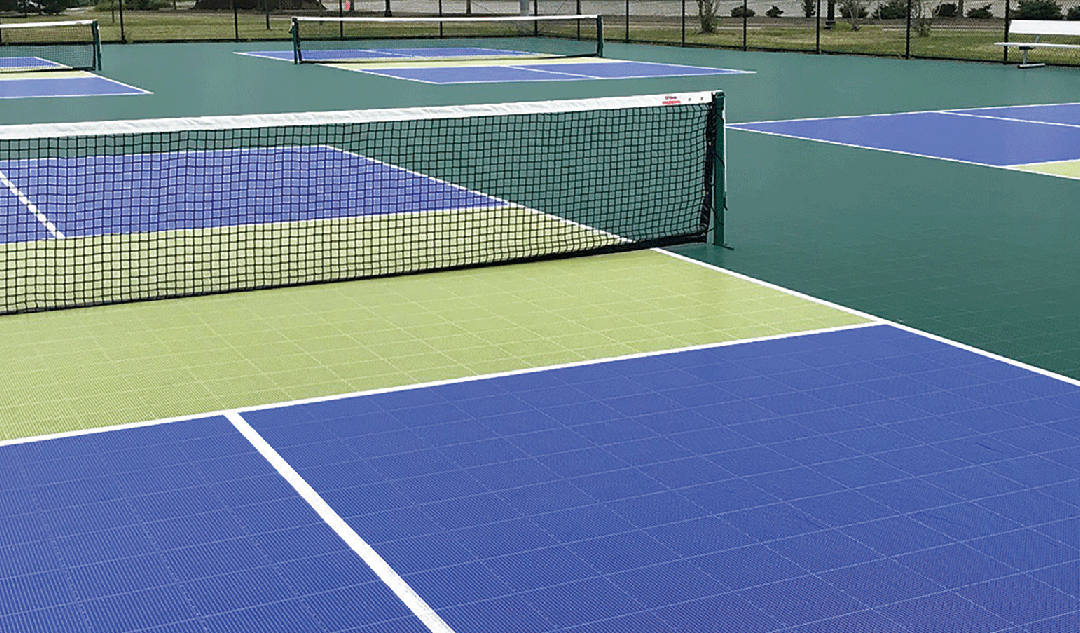Pickleball, a sport that blends the thrill of tennis, the finesse of badminton, and the agility of ping pong, has emerged as a beloved pastime for players of all ages. Central to the experience of pickleball is the pickleball court itself, a meticulously designed space that serves as the arena for spirited competition and camaraderie. In this comprehensive guide, we will delve into the intricacies of pickleball courts, exploring their dimensions, surface materials, and the crucial role they play in shaping the game.
The Foundation of Pickleball Courts
1. Court Dimensions
A regulation pickleball court measures 20 feet wide by 44 feet long, with a net height of 36 inches at the sidelines and 34 inches at the center. The court is divided into two equal halves by a 34-inch-high net, creating playing areas of 20 feet by 22 feet on each side. These standardized dimensions ensure uniformity and fairness across pickleball courts worldwide.
2. Surface Materials
Pickleball courts can be constructed using a variety of surface materials, each offering distinct advantages:
– Asphalt :
Asphalt courts are durable and cost-effective, making them a popular choice for outdoor pickleball facilities. However, they may require regular maintenance to prevent cracking and deterioration over time.
– Concrete :
Concrete courts offer exceptional durability and require minimal maintenance. They provide a smooth surface for gameplay but may be susceptible to surface irregularities and joint strain with prolonged play.
– Cushioned Surfaces :
Specialized cushioned surfaces, such as acrylic or rubberized coatings, provide shock absorption and reduce joint impact, making them ideal for players seeking enhanced comfort and injury prevention during play.
Designing the Perfect Pickleball Court
1. Location Selection
Choosing the right location for a pickleball court is crucial to its success and usability. Factors to consider include:
– Accessibility :
The court should be easily accessible to players of all ages and abilities, with ample parking and amenities nearby.
– Sun Exposure :
Positioning the court to minimize direct sun exposure can enhance player comfort and prolong the lifespan of the playing surface.
– Drainage :
Proper drainage is essential to prevent water accumulation and ensure the court remains playable in inclement weather conditions.
– Space Requirements :
Adequate space around the court for spectator seating, equipment storage, and player movement enhances the functionality and appeal of the facility.
2. Construction Process
The construction of a pickleball court involves several key steps, including:
– Site Preparation :
Clearing the site of any obstructions, leveling the ground, and ensuring proper drainage.
– Base Installation :
Creating a stable base using materials such as gravel or crushed stone to support the playing surface.
– Surfacing :
Applying the chosen surface material evenly and allowing it to cure properly for optimal performance.
– Line Marking :
Precision marking of court boundaries and features according to official regulations and standards.
Maintaining Pickleball Courts for Longevity
1. Regular Cleaning
Routine cleaning of pickleball courts is essential to remove debris, dirt, and organic matter that can accumulate and compromise playing conditions. Methods may include sweeping, pressure washing, and occasional deep cleaning to restore the surface’s appearance and performance.
2. Surface Repairs
Prompt identification and repair of surface imperfections, such as cracks or potholes, are critical to prevent further damage and ensure player safety. Professional resurfacing may be required periodically to address wear and tear from heavy use and environmental factors.
3. Net and Equipment Maintenance
Inspecting and maintaining pickleball court equipment, including nets, posts, and fencing, prolongs their lifespan and enhances safety. Regular checks for damage or wear allow for timely repairs or replacements as needed, ensuring a safe and enjoyable playing environment for all.
Read it : Evaluación del Procesamiento Auditivo
Conclusion
In conclusion, pickleball courts serve as the foundation for the sport’s growth and enjoyment. By understanding the nuances of court design, construction, and maintenance, enthusiasts can ensure the availability of top-quality facilities for players of all levels. Whether you’re planning a new court installation or maintaining an existing facility, prioritizing quality and attention to detail is key to creating an exceptional pickleball experience.



